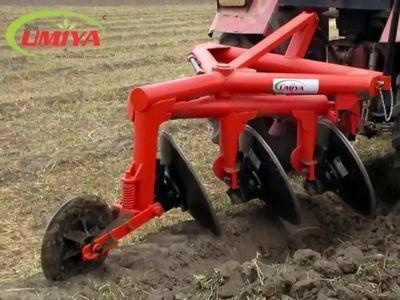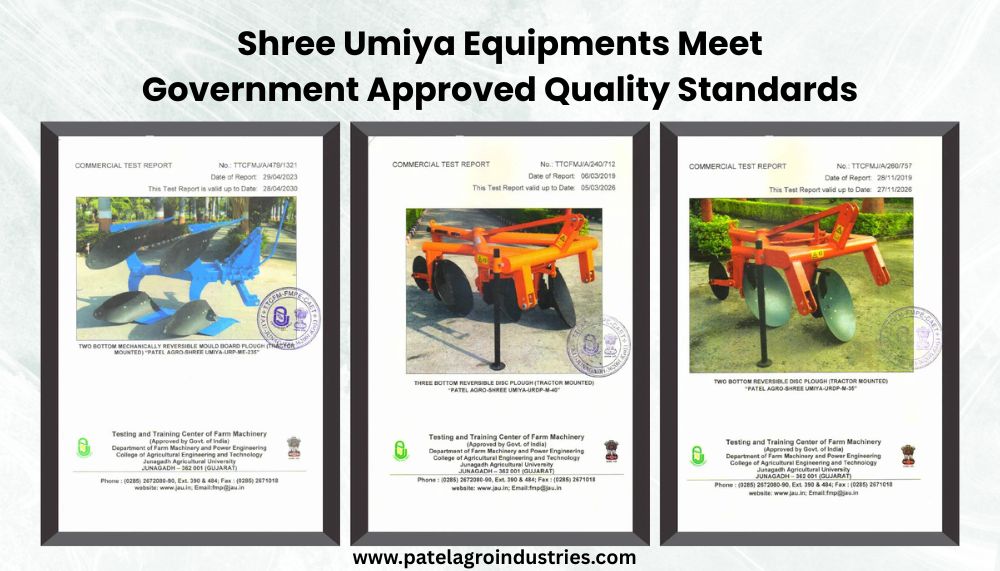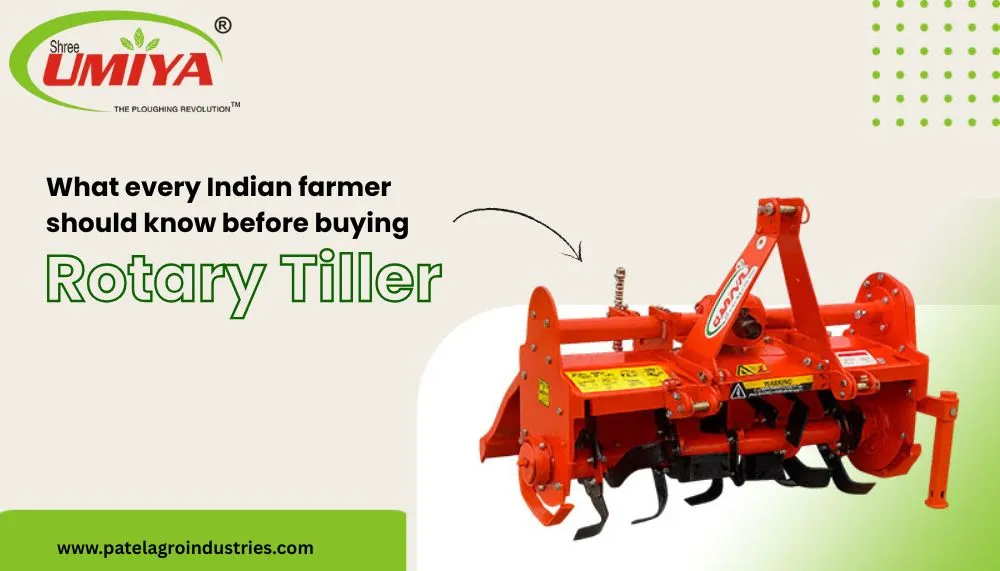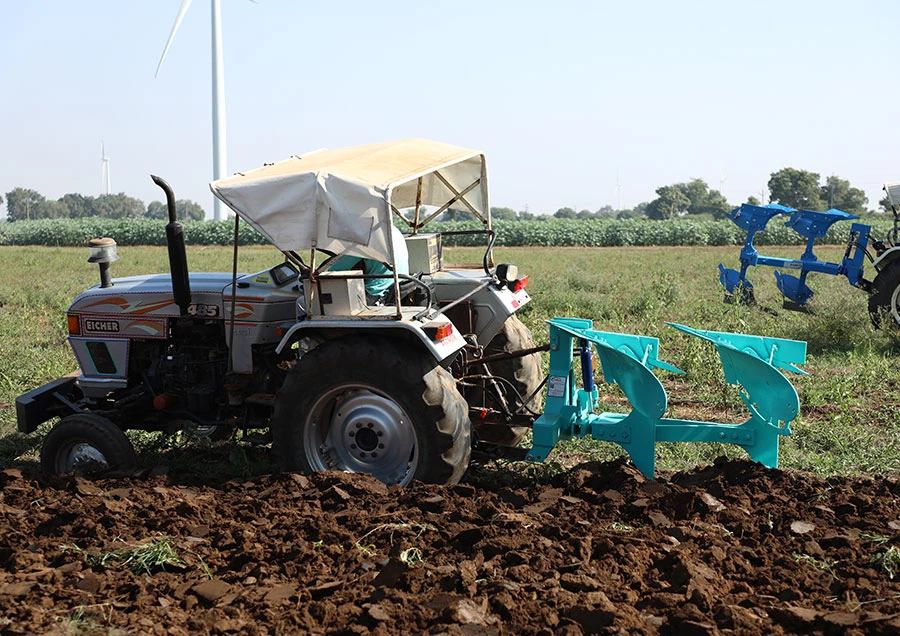Chat With Us
+91 99253 37969Mechanical vs Hydraulic Reversible Plough: Which is Right for You?

In modern farming, the equipment you choose can make or break your productivity. The reversible plough, a device used to till soil for crops, is one such fundamental piece of equipment. Yet, when you have decided you need to buy one, you have to decide between mechanical and hydraulic. Each has its advantages, and knowing them will allow you to make a more intelligent choice.
Here, we explain the contrast between a mechanical and a hydraulic reversible plough so that you can decide which one suits you best.
What is a Reversible Plough?

A reversible plough, as the name indicates, can till the soil both ways. Contrary to typical ploughs, you won't have to make the same path turn back. After each pass, you can simply reverse the plough and continue without wasting fuel or time. There are two basic kinds:
- Mechanical Reversible Plough
- Hydraulic Reversible Plough
Let's take a look at each of these to see how they work.
Mechanical Reversible Plough: Simple, Sturdy & Manual

The mechanical one is the older of the two. It uses a manual lever or linkage system to reverse the plough after each row, to turn the plough around after every row. Generally, the driver must come down (or lean over from the seat) and flip the plough using the lever after stopping the tractor.
Advantages of Mechanical Reversible Plough
- Lower Cost: The plough is cheaper to buy and maintain.
- Fewer Parts: It has simpler components, which means fewer chances of failure.
- Ideal for Small Farms: Best suited for farmers with smaller land areas and limited use.
Cons of Mechanical Reversible Plough
- Requires Physical Effort: You’ll need to manually reverse it after every pass, which takes time and energy.
- Interruptions: Frequent stops can slow down your workflow.
- Less Efficient on Large Farms: With more ground to cover, it becomes a drudge.
Hydraulic Reversible Plough: Advanced, Efficient & Effortless

The hydraulic reversible plough is a better version of the reversible plough that operates by hydraulic pressure to turn over the plough. It's operated directly from the tractor seat using levers or switches, resulting in a much faster and simpler process.
Advantages of Hydraulic Reversible Plough
- Effortless Operation: Flip the plough without leaving your seat.
- Time-Saving: Great for larger farms where speed matters.
- Higher Productivity: You spend more time ploughing and less time adjusting.
- Precision Handling: Offers better control over the ploughing process, even on uneven terrain.
Cons of Hydraulic Reversible Plough
- Higher Cost: Initial purchase and maintenance costs are higher.
- Requires Hydraulic System: Your tractor must support hydraulic functions.
- More Parts: With additional components, there is a greater likelihood of service or repair requirements.
Comparison in the Field
The two ploughs perform the fundamental task similarly well, each turning over the soil nicely. However, in terms of ease of use, comfort, and speed, the hydraulic model far exceeds its counterpart.
Soil Types & Ground
Mechanical ploughs are ideal for flat, soft grounds without any hindrances.
Hydraulic reversible ploughs are better suited for harder ground or diverse landscapes, as adjustments can be made easily while in the field.
Farm Size
Small Farms (< 5 acres): A mechanical plough should be enough.
Medium to Large Farms (5+ acres): A hydraulic reversible plough will prove to be time and energy saving in the long term.
Maintenance & Longevity
In terms of maintenance, they both require cleaning and periodic parts replacement. But here's what sets them apart:
- Mechanical ploughs: Fewer parts are moving, so they don't break down as often. Simple grease and bolt checks will do.
- Hydraulic ploughs: Need regular examination of hoses, seals, and hydraulic fluid. They require more maintenance but also provide better performance if properly maintained.
Budget Consideration
The budget is usually the bottom line. Mechanical ploughs may be a lot less expensive than their hydraulic siblings, so if you are on a tight budget, this is the way to go. Just remember the long-term value. If you have heavy workloads, the time and labor saved with the hydraulic model may be a worthwhile investment.
Which Should You Choose?
Here’s a quick recap to help you decide:
| Feature | Mechanical Reversible Plough | Hydraulic Reversible Plough |
| Cost | Lower initial and maintenance costs | Higher purchase and service costs |
| Ease of Use | Manual reversing | Operated from the tractor seat |
| Best For | Small farms, soft terrain | Large farms, uneven or hard terrain |
| Maintenance | Basic (greasing, bolt checks) | Regular checks for hydraulic parts |
| Time Efficiency | Slower due to manual effort | Faster and more productive |
Final Thoughts
While mechanical reversible ploughs may serve the basics, there's no denying the unmatched ease, speed, and efficiency that hydraulic technology brings to the field. For modern-day farmers who value time, comfort, and consistent output, the hydraulic reversible plough is the clear winner.
At Patel Agro, we offer two high-performance options Hydraulic Reversible MB Plough and Hydraulic Reversible Disc Plough, each engineered to tackle diverse terrains with precision. With hydraulic operation, you save fuel, reduce fatigue, and get more work done in less time.
So why settle for less when hydraulic gives you more?
Upgrade to the Patel Agro hydraulic plough range, because smarter farming starts with smarter tools.





